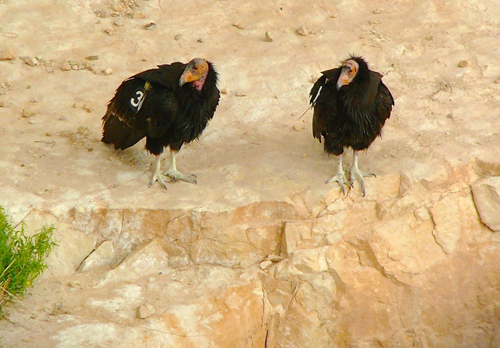To Sunday, August 20, 2017

After soaking up the avian riches of Southeastern Arizona at the Tucson Audubon Society birding festival, we'll have four days in the high, cool White Mountains of Central Arizona. The White Mountains essentially comprise the southernmost extension of the Rocky Mountains. Thanks to the comparative close proximity of the White Mountains to Tucson, we'll have chances for many birds that normally require a separate trip deeper into the Interior West of the United States. Species that most birders can't picture nesting in Arizona such as Osprey and Bald Eagle, Downy and American Three-toed Woodpeckers, Williamson's and Red-naped Sapsuckers, Gray and Pinyon Jays, Clark's Nutcracker, American Dipper, Gray Catbird, and Mountain Bluebird are all possible. We'll even peruse a few areas where the elusive Dusky Grouse is known to occur. And, owing to the checkerboard of meadows and forest that cloak the White Mountains, we'll have more and better opportunities for viewing birds like Red-faced and MacGillivray's Warblers. Naturally these birds thrive in the state’s premier Elk habitat, and sightings of these large and imperial deer are probable. Here, too, are herds of Pronghorn, achieving speeds of up to 45 miles-per-hour, and earning the title of the fastest land mammal in North America. A profusion of polychrome wildflowers are sure to ornament the banks of the highland trout streams. Transiting from Tucson to Central Arizona we’ll cut through the interior chaparral metropolis for Arizona’s population of breeding Gray Vireo. Rounding out our northern Arizona experience, we’ll also bird the environs of the Grand Canyon. Scenic overlooks and migrant traps will characterize the drive to Flagstaff along historic Route 66. A well-timed visit to the Vermilion Cliffs or Marble Canyon–or both–should position us to catch lift-off for America’s largest raptor, the magnificent California Condor. Once facing extinction with only 22 individuals, the population has inched upward to 230 wild, free-flying individuals, thanks to an ambitious captive breeding program. The American Birding Association even recently announced that Condors could now be “counted” per ABA rules, and second generation Condors are again breeding on remote cliffs within this colossal de facto wilderness. Though some may consider Condors the climax of any Arizona trip, for others the simply awe-inspiring vistas from the South Rim of the Grand Canyon will resonate long after our return to Tucson.
Leader: John Yerger
Cost of Alpine Arizona, Grand Canyon & Condors includes guided birding, all meals, accommodations, entrance fees, and transportation from Tucson, Arizona—$2295.
TO REGISTER: Print out a PDF Registration Form, call us at (520) 558-2351 or This email address is being protected from spambots. You need JavaScript enabled to view it..
See also: Arizona Owling Run (May 17-21, 2017), Bird Communities of the Sky Islands (August 7-9, 2017) OR Arizona Winter Specialties (December 3-9, 2017)
Photo: California Condors
Photo by: Rick Taylor







